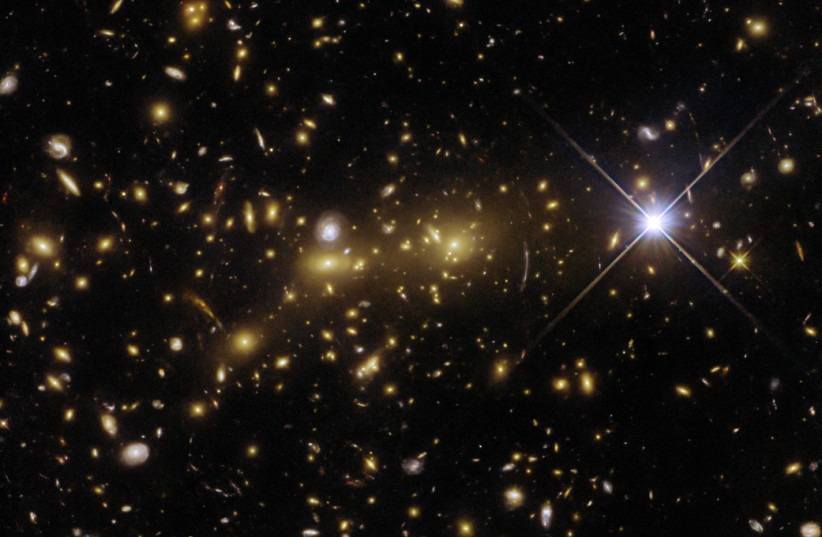The Hubble Space Telescope (HST) has recently captured an image of a minimum of two galaxy clusters in the act of merging together to create what the European Space Agency (ESA) calls a “gargantuan cluster.” The ESA/NASA report was published on the NASA website earlier this month.
The report of the image describes the HST observation as witnessing the formation of “a single gargantuan cluster acting as a gravitational lens.” The HST is operated by the National Air and Space Association (NASA) in conjunction with the ESA.
NASA’s HST website, hubblesite.org, describes a gravitational lens as a phenomenon that “can occur when a huge amount of matter, like a cluster of galaxies, creates a gravitational field that distorts and magnifies the light from distant galaxies that are behind it but in the same line of sight.”
It has the practical effect of a magnifying glass, microscope, or binoculars, and enables scientists to observe celestial bodies that would otherwise be too distant to discern.
That the merging galaxy clusters captured by the HST are forming a gravitational lens speaks to the enormous scale of the cosmic event being witnessed.

Gravitational lensing and Einstein's Theory of Relativity
Gravitational lensing itself is a representation of Albert Einstein’s Theory of Relativity. Einstein’s theory posits that an object of sufficiently huge amount of mass can create a gravitational field that distorts spacetime and bends light.
The galaxy cluster is named eMACS J1353.7+4329, and the gravitational lensing associated with it is already distorting images of galaxies in the background. The distortion is causing them to appear in the image, as the ESA/NASA report describes, “bright arcs which mingle with the throng of galaxies” within the cluster.
The ESA/NASA report notes that the data in the HST image are obtained from a project called Monsters in the Making. This project observes five particular galaxy clusters using two Hubble instruments to prepare for future work exploring large gravitational lenses with next-gen telescopes.
